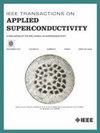在慕尼黑实施的Superlink HTS电缆系统的开发
IF 1.8
3区 物理与天体物理
Q3 ENGINEERING, ELECTRICAL & ELECTRONIC
引用次数: 0
摘要
自2020年以来,SuperLink项目开发了一种超导高温超导电缆技术,适用于在Stadtwerke m本文章由计算机程序翻译,如有差异,请以英文原文为准。
Development of the Superlink HTS Cable System for Implementation in Munich
The SuperLink Project develops, since 2020, a superconducting HTS cable technology suitable for the transmission of 500 MVA at the 110 kV level in the network of Stadtwerke München (SWM). A system consisting of a cable cryostat, the superconducting cable, joints, splitterboxes, terminations and a separate return line for the coolant has been developed and tested according to the specifications of the user and project coordinator SWM. It uses high-performing HTS wires, a fully polymeric cryogenic dielectric with low dielectric losses and a novel former concept compensating the thermal contraction. These components have been tested individually and together according to the test standard IEC 63075 and will be operated in the 150 m demonstrator of the project in the network of SWM. Due to limited availability of space in big-city environments, one utility requirement is to minimize the number of cooling stations along the length of a 15 km circuit in Munich. This demands very low loss-levels for the cable and cryostat and has required the development of novel cooling architectures and advanced electrical-, thermal- and hydraulic- modelling tools. Some of the modeling methods and key measured results are presented in this article.
求助全文
通过发布文献求助,成功后即可免费获取论文全文。
去求助
来源期刊

IEEE Transactions on Applied Superconductivity
工程技术-工程:电子与电气
CiteScore
3.50
自引率
33.30%
发文量
650
审稿时长
2.3 months
期刊介绍:
IEEE Transactions on Applied Superconductivity (TAS) contains articles on the applications of superconductivity and other relevant technology. Electronic applications include analog and digital circuits employing thin films and active devices such as Josephson junctions. Large scale applications include magnets for power applications such as motors and generators, for magnetic resonance, for accelerators, and cable applications such as power transmission.
 求助内容:
求助内容: 应助结果提醒方式:
应助结果提醒方式:


